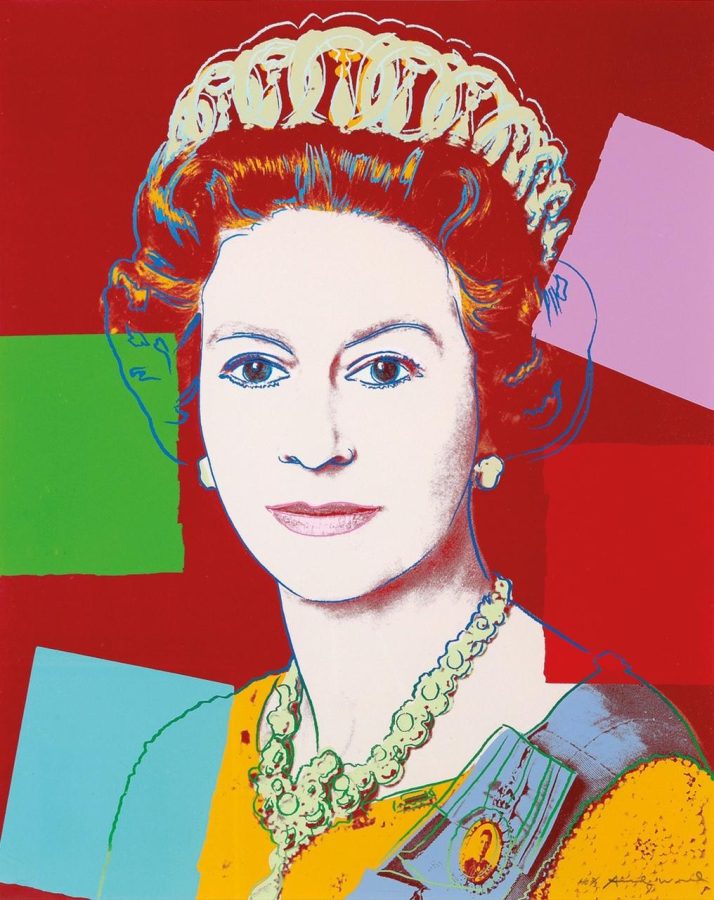Remembering Queen Elizabeth as the Pop Culture Icon She Was
September 14, 2022
On Sept. 8 2022 the world rose to the news that Queen Elizabeth II, Great Britain’s longest-ruling monarch, had passed away at the age of 96. In being a ruler for 70 years, the Queen witnessed a monumental change in pop culture in the United Kingdom and otherwise. The Queen will be remembered for having audiences with some of the most inspirational leaders in our modern era and some of the brightest celebrities, from Marilyn Monroe to Sir Elton John.
As Queen of one of the world’s oldest surviving monarchies and reigning in an era of such monumental change, it would only make sense that she would become a fixture that not only influenced popular culture but was influenced herself by the people who followed her.
The Second Elizabethan Era
Queen Elizabeth was crowned in June of 1953 towards the tail end of England’s imperial grasp on the world, as many countries increasingly claimed their independence from the monarchy and shifted towards nationalist movements. Although she entered the regency at a time of growing threats of war from the USSR, she was seen in the public eye as a new, fresh young woman who could bring the aging monarchy out of the past and into the present.
Buckingham Palace made the daring decision to have Her Majesty’s coronation filmed for television audiences, which would subsequently be viewed by over 20 million people worldwide, launching her and the royal family into the modern and accessible zeitgeist.
From that point on, the demand from the British people to not only hear Her Majesty on the radio but see her on the television grew. Christmas of 1957 featured another historic moment that saw Queen Elizabeth addressing the citizens of the commonwealth on live TV. Although the royal family began creeping into the limelight, they still remained prominent hierarchical figures who few dared to challenge.
Queen Elizabeth v. Counter Culture
As the warmth of tradition and regularity faded away, cold war tensions increased and misguided British involvement in foreign affairs stirred anti-war sentiments, the common fair of British citizens began to grow weary of the monarchy as counter-culture began to take hold in the United States as well as Great Britain.
The royal family started to be seen as trivial and selfish as the era of “free love” set in. With continuous scandals breaking from the royal family, their untouchable status began to fall and criticism from artists started to grow.
In a 1969 ploy to gain sympathy from the British subjects, Buckingham Palace recorded a documentary entitled “The Royal Family,” depicting the day-to-day lives of the Queen and her relatives. This only served to further alienate the crown from the counter-cultural ideology.
“Her Majesty” by The Beatles was one of the first songs to speak of the Queen in a not-so-respectable tone. Although the song isn’t an outright indictment of the crown, it was more tongue-in-cheek than any prior works written about the Queen.
As British unrest grew more critical into the 1970s more artists took to their platforms to express their anger. “God Save The Queen” by the Sex Pistols caused national outrage upon its release during the Queen’s Diamond Jubilee in 1977. The dissatisfaction of the crown reached a head when two assassination attempts on the Queen took place in 1981. From this point on, the royal family began to take on a friendlier persona and started the descent from the pedestal they were traditionally placed on. This was in part help thanks to the social work of Princess Diana.
The Queen as a Pop Culture Staple
From the early 80s into the 90s, Princess Diana helped usher the royal family, and the Queen by extension, into the limelight of a modernizing society at the turn of the millennium. Queen Elizabeth began to become an iconic figure who had reigned through some of the darkest parts of modern British history. Songs like “The Queen is Dead” by The Smiths and “Dreaming of the Queen” by the Pet Shop Boys referred to the Queen as now a matronly settled monarch who has been ingrained in the fabric of the globalized zeitgeist.
Her persona began to reach television spoofs and skits on late-night shows like “Saturday Night Live,” “The Simpsons” and “The Kids in the Hall.” Although she was still respected as the regent she was, her fame and icon status seemed to surpass the significance of her role.
As the new millennium broke, interest in the Queen and the royal family started to grow, as fans’ curiosity grew toward the inner machinations of this woman who at this point had been queen for over 50 years. Highly successful movies like “The Queen” and “A Royal Night Out” as well as TV shows like “The Crown” continued to launch the Queen into the public eye even as antimonarchist sympathies have grown in the past years. With the summer 2012 Olympics being held in London, England, the Queen again stole the show via an appearance with James Bond, played by Daniel Craig, featuring her sky diving out of a helicopter over the Olympic Stadium.
A Queen for 70 years, an Icon Forever
Throughout the 70 long years of her reign, Queen Elizabeth witnessed the radical and fundamental shift in popular culture, politics, art and social norms that altered society into its standing today. She led her country through many trials and tribulations with pose and grace and inspired a myriad of creative works. The head of state’s historic reign may have ended, but her legacy and contribution to the world’s pop culture as a modern monarch for not only the British commonwealth but the world will live on for decades to come.







